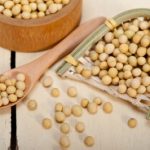The effective handling of food wastes at home can prove tricky especially if one is hoping to be responsible by returning nutrients to the soil and improving upon vegetable and fruit production. Landfilling is becoming less attractive globally and is slowly being banned in many countries. In 1999, the EU Landfill Directive (Council of European Union, 1999), requested member states would promote recovery and recycling at both the municipal and domestic level as well as reduce their landfill. Much of the organic waste generated is now passed to municipal treatment facilities but home composting could be an answer.
Composting is another form of solid-state fermentation which relies on microorganisms digesting residual waste, raising the temperature to a point where pathogenic organisms are killed in the process. It also produces a reusable organic substrate, a soil conditioner in some instances for returning to the land and in my household is a valuable resource for further growing of food. There are many scientific articles worth exploring on the ‘art’ or the industry of composting (Haug, 1993; Hoitink and Keener, 1993). The approach of LCA –Life Cycle Assessment has been applied to municipal composting (Guereca et al., 2006) in Spain and I refer to the technique in a preceding post. At the smaller scale, the technique has only recently been applied (Colón et al., 2010) with any success. One recent report suggests that 20% of organic houselhold waste (OHW) might be composted at home, based on a study of composting in West London (Smith and Jasim, 2009). Generally, meat and fish is to be avoided to minimise rat infestation but fats, oils and greases might be composted at home if flies are not considered an issue. Fruit wastes can degrade too rapidly to produce an acidic leachate or waste which might need tempering with other materials to reduce taints and smell (Chanakya et al., 2007). The heat attracts slow-worm which I have been lucky enough to keep without sticking my fork into when I turn the heap monthly.
The study by Colón et al., (2010) looked at the composting of just raw fruit and vegetables in an experimental system. They produced a high organic material with a good nitrogen content. They monitored greenhouse gas emissions such as methane, nitrous oxide, ammonia, and volatile organic compounds (VOCs) with the latter measuring 0.32 kg VOC/Mg raw fruits and veg. Methane (CH4)and nitrous oxide (N2O) are notorius for their global warming potential (GWP). These have been calculated to be 25 and 298 over a 100 year time frame respectively according to Solomon et al., 2007. This aspect of home composting was investigated further by Andersen et al., (2010).
One criterion for Colón et al., (2010)- the eradication of pathogens and other phytotoxic compounds was achieved. Composting itself might contribute to ozone layer and abiotic depletion based on these measures. The authors also used a garden chipper which had an electricity demand and might contribute to acidification using a life cycle assessment. I’d welcome any further thoughts on the process, especially with regards to the use of a macerator for creating a suitable organic waste which might then be used for further processing by composting and the quality of this material.
References
Andersen, J.K., Boldrin, A., Christensen, T.H., Scheutz, C. (2010) Greenhouse gas emissions from home composting of organic household waste. Waste Manag., 30(12) pp. 2475-2482
Chanakya, H.N., Ramachandra, T.V., Guruprasad, M., Devi, V. (2007) Micro-Treatment options for components of organic fraction of MSW in residential areas. Environ. Monit. Assoc. 135 pp. 129-139
Colón, J., Martinez-Blanco, J., Gabarrell, X., Artola, A., Sanchez, A., Rieradevali, J. Font, X. (2010) Environmental assessment of home composting. Res. Cons. Recycl. 54(11) pp. 893-904
Güereca, L.P., Gasso, S., Baldasano, J.M., Jimenez-Guerrero, P. (2006) Life cycle assessment of two biowaste management systems for Barcelona, Spain. Res., Cons., Recycling 49 pp. 32-48
Haug, R. (1993) The Practical handbook Of Compost Engineering. Lewis Publishers, Boca Raton.
Hoitink, H.A.J., Keener, H.M. (1993) Science And Engineering Of Composting: Design, Environmental, Microbiological And Utilization Aspects. Renaissance Publ., Worthington.
Smith, S.R., Jasim, S. (2009) Small-scale home composting of biodegradeable household waste: overview of key results from a 3-year research programme in West London. Waste Manag. Res., 27 pp. 941-950
Solomon, S., Qin, D., Manning, M., Alley, R.B. et al., (2007) technical Summary In: Solomon, S., Qin, D., Manning, M., Chen, Z., Marquis, M., Averyt, K.B., Tignor, M., Miller, H.L. (eds.) Climate Change 2007: The Physical Science Basis. Contribution of working group I to the fourth assessment resport of the intergogernmental panel on climate change. Cambridge Univ. Press, Cambridge. UK and New York. NY. USA.



Leave a Reply